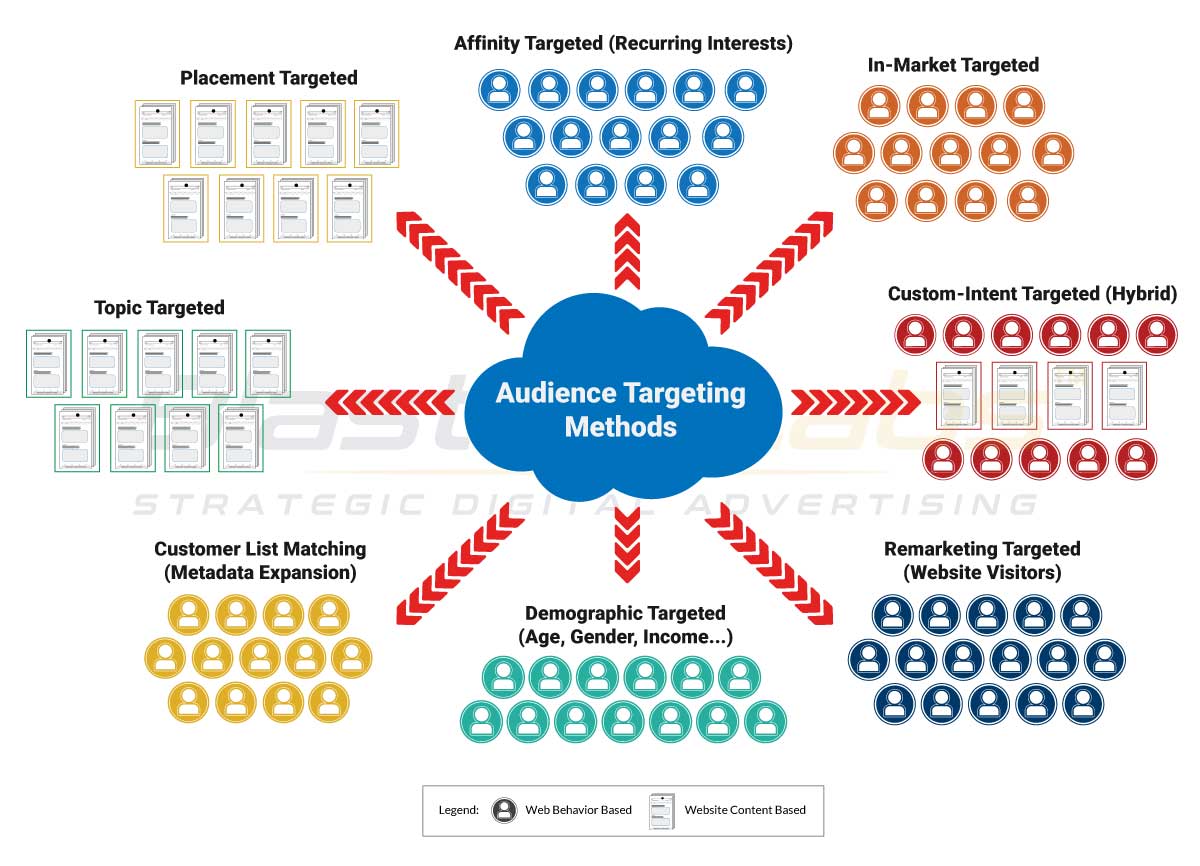
Audience targeting applied in a search campaign acts as an overlay on keyword matching. It allows “shaping” who the ads serve to. For example, we might exclude certain age groups or income levels.
It may be beneficial to exclude certain audiences. These so-called “negative audiences” can also be useful in shaping campaign performance. Examples of negative targeting involve including certain in-market audiences, interests, and demographics. The latter might include age, gender, income level, parental, homeownership status and other demographic information.
In search ad campaigns we can also use remarketing lists as search audiences. This is known as ‘RLSA’, short for “Remarketing Lists for Search Ads”. RLSA facilitates serving different search ads to those visitors who showed engagement in previous searches. RLSA allows the advertiser to follow a user as they navigate their sales funnel journey to a conversion. Not just through display remarketing, but on search engine result pages as well.
Search campaign audience configuration is an important capability that shouldn’t be neglected.
More: blog articles on audiences






